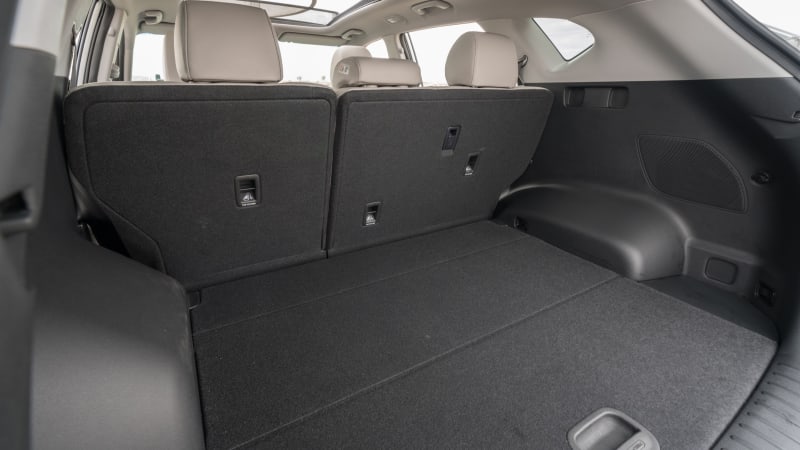2020 Hyundai Tucson Review and Buying Guide | Following the path
https://ift.tt/2MmJlaD
The Hyundai Tucson sticks to its guns this year, still positioned as a value proposition in the compact crossover class. It may not be as shiny and new as it was for the redesigned 2016 model year, but the Tucson still manages to be an attractive choice due to its premium features and handsome curves.
Hyundai managed to sneak in a mid-cycle update for the 2019 model year to keep things fresh, too. This makes it a slightly more enticing option now, but the large swath of new competitors out there makes for an especially difficult choice in this segment. We would never call the Tucson the most dynamic or fun-to-drive crossover, but it does offer up a handy bit of utility and comfort at a relatively low price point.
What’s new with Tucson for 2020?
Hyundai didn’t change much for the 2020 model year. Four colors get swapped out: Stellar Silver replacing Molten Silver, Magnetic Force replacing Coliseum Grey, Winter White replacing Dazzling White, and Cream White replacing White Pearl. The only other modification is leather-wrapped steering wheel and shift knob expanding availability down to the Sport trim.
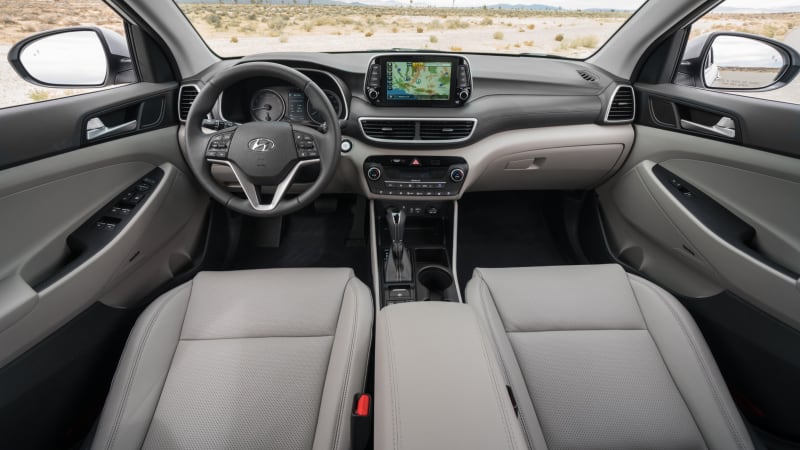

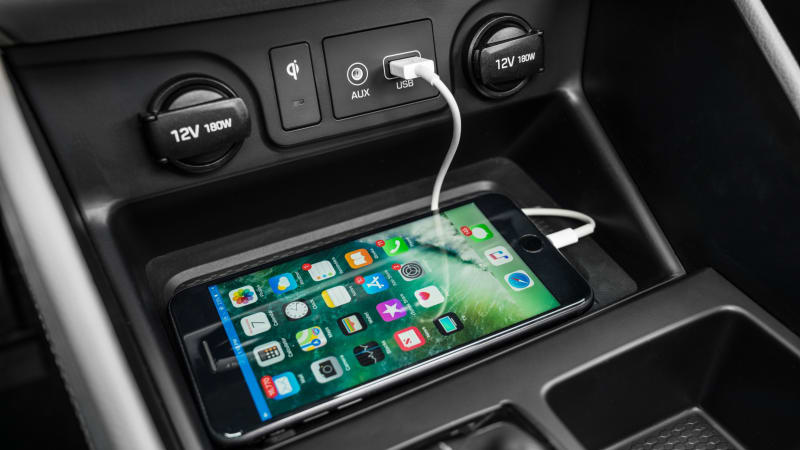

What’s the Tucson’s interior and in-car technology like?
The design and layout of the interior is rather bland but functional, all the way up to the most expensive “Ultimate” trim level – no matter the trim, it’s not going to wow anybody. If you want a little more style from your crossover’s interior, look elsewhere, or look at the slightly larger Santa Fe sitting next to it on the dealer lot. There are some poor quality plastics littered about, but Hyundai does a decent job of making sure the pieces you’ll actually touch regularly are soft.
As all modern Hyundai infotainment systems go, this one is easy to use and relatively simple, but it isn’t the prettiest to look at. Both Android Auto and Apple CarPlay are standard on the cheapest of Tucsons, because Hyundai makes its 7-inch touchscreen standard equipment. An 8-inch screen with navigation and upgraded audio system is added to the Limited and Ultimate trims. Every trim but the base SE makes heated front seats standard, too. The rear seats are heated on the top Ultimate trim.
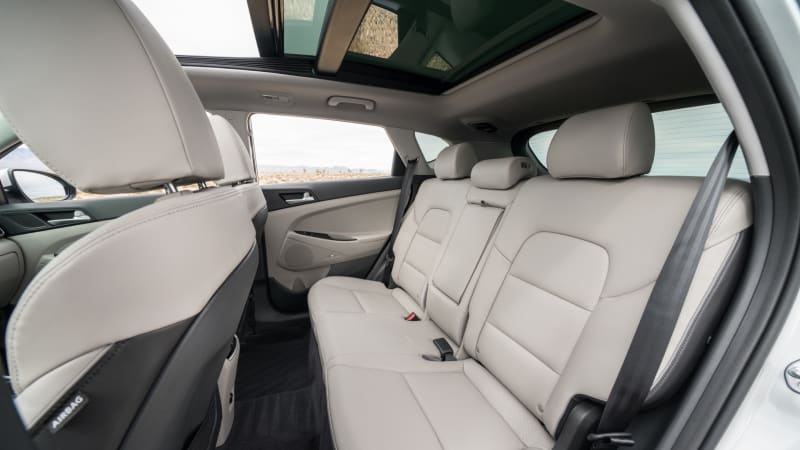
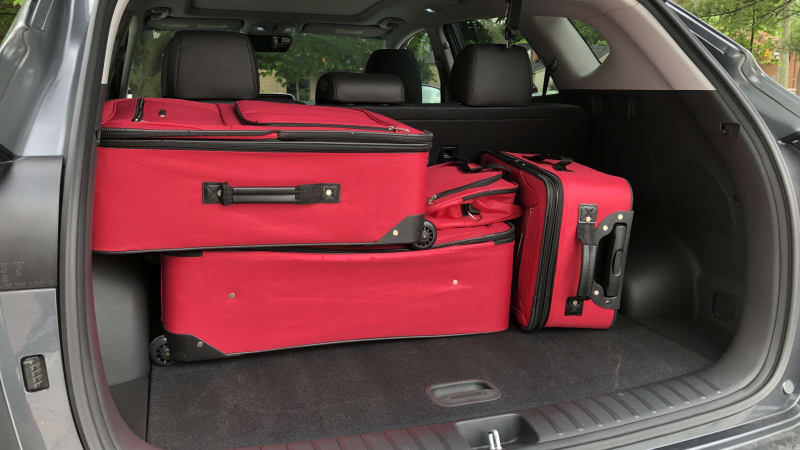
How big is Tucson?
The 2020 Hyundai Tucson fits neatly into the ever-growing compact crossover segment. It measures 176.2 inches in overall length, which makes it one of the smaller vehicles among its competitors. It’s also lacking in ground clearance compared to others, coming in at just 6.4 inches. While that’s not ideal for mud or deep snow, it does make getting in and out of the Tucson easier.
Legroom and cargo capacity are average, but the cargo area is well-shaped and the full space is usable. The rear seats fold down flat, leaving you a well proportioned and natural loading area for heavy lifts. Space in the second row is plenty for most folks, so longer trips should remain comfortable for those relegated to the back seats.
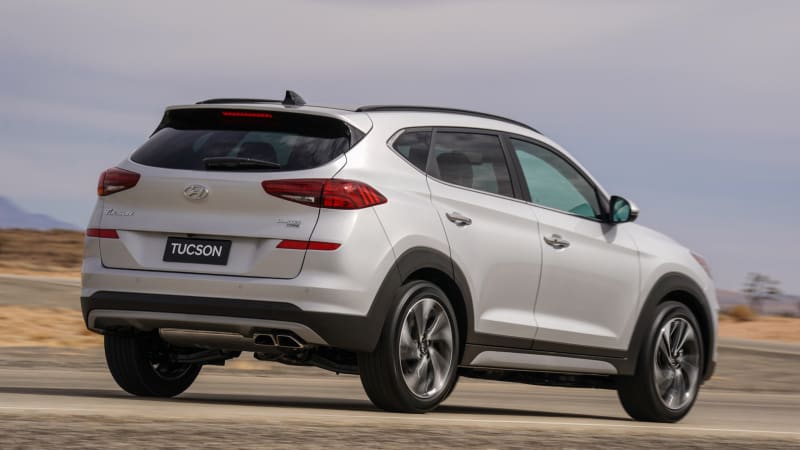
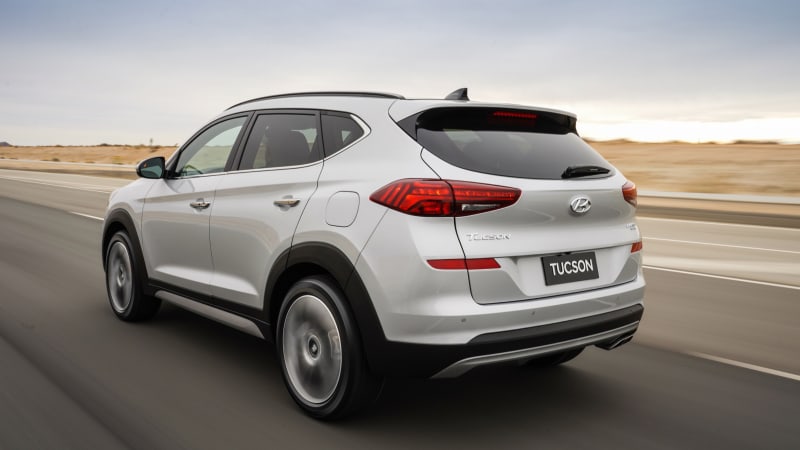
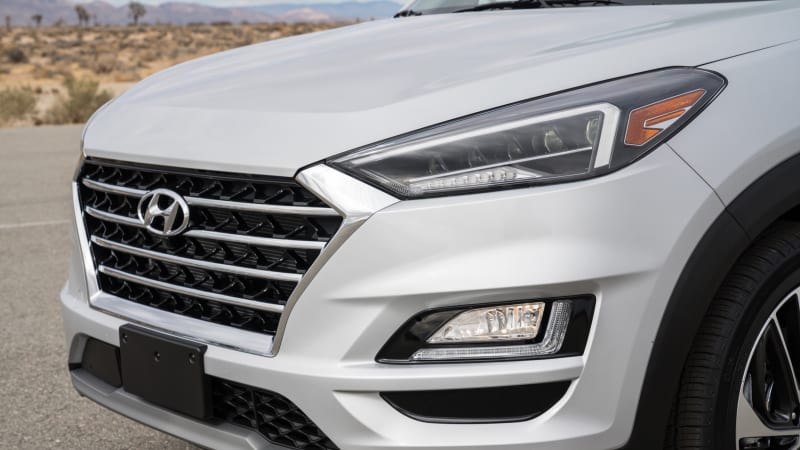
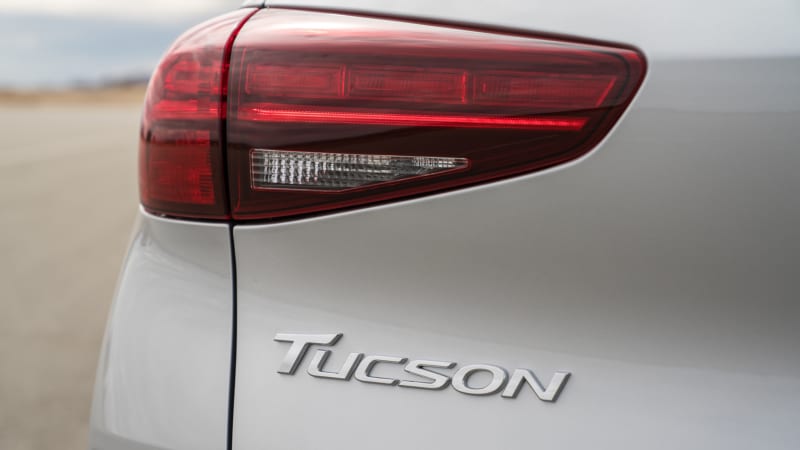
What’s Tucson’s performance and fuel economy?
There are two engine options available for the 2020 Hyundai Tucson. The base engine is a 2.0-liter four-cylinder that makes 161 horsepower and 150 pound-feet of torque. A 2.4-liter four-cylinder that makes 181 horsepower and 175 pound-feet of torque is standard on SEL and above. Both the engines are connected to six-speed automatic transmissions. We’ve only driven a Tucson with the bigger four-cylinder engine and found the power to be on the lower side of adequate. The less powerful 2.0-liter will just feel even slower. We weren’t disappointed in the performance from the smooth and relatively responsive six-speed torque converter automatic.
Front-wheel drive is standard, but all-wheel drive is optional. The best fuel economy is achieved by the front-wheel drive Tucson with the 2.0-liter four-cylinder. It’s rated at 23 mpg city, 30 mpg highway and 26 mpg combined. That drops to 21/26/23 mpg when you go for the top-of-the-line 2.4-liter with all-wheel drive. These numbers aren’t best-in-class, but we managed to match the EPA numbers in real world driving on the latter.

What’s the Tucson like to drive?
The Hyundai Tucson is generally pleasant to drive around town. Its handling is adequate, and while it’s not especially maneuverable at low speeds, it never feels big when winding through tight parking lots. The front-driver has a tendency to torque steer at low speeds, like those encountered when taking a 90-degree turn after a stop sign, which is why we’d recommend the Magna-sourced all-wheel drive and its accompanying torque-vectoring system. Capable of shunting torque to the wheel with the most grip, the system proved sure-footed. Through the turns, we were able to feel the system at work, shifting torque as needed. There’s also a lock mode that forces a perfect 50-50 split between front and rear for low-traction situations. Comfort is normal crossover fare — it soaks up bumps well, and body motions are kept in check.
We do miss the spunky turbocharged engine from before; the new, larger naturally-aspirated four-cylinder doesn’t provide much passing power once you’re up to speed. There was no snow on the ground when we tested a 2019 Tucson, but the optional all-wheel drive system should keep things moving forward in the fluffy stuff.
What more can I read about the Tucson?
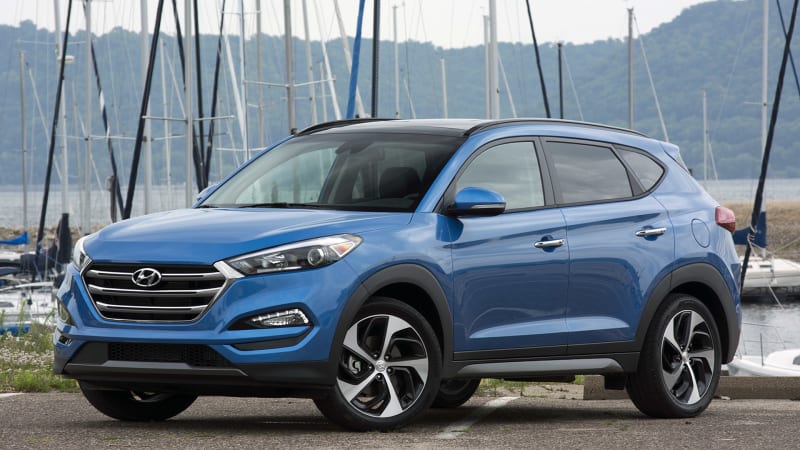
You can read our first drive review of the redesigned Tucson here. When the car came out for the 2016 model year, it was a big deal for Hyundai, which promised a unique design and more fun driving characteristics to help it stand out.
What features are available, and what’s the Tucson’s price?
Pricing for the 2020 Hyundai Tucson starts at $24,445, including the $1,095 destination charge. A fully-loaded Ultimate will reach as high as $34,195, and then you can add accessories from there. All-wheel drive is a $1,400 option on any trim.
A base SE is equipped with plenty of standard equipment like automatic headlights, heated outside mirrors, keyless entry, and a 7-inch infotainment system with Android Auto and Apple CarPlay. All-wheel drive can be had on any trim. Hyundai also offers a sporty appearance package. You get neat stuff like Rays 19-inch wheels, aluminum-alloy sport pedals and black mirror caps.
The base price for each trim level is listed below, but we provide a full breakdown of features, specs and local pricing here on Autoblog.
Value: $25,895
SEL: $26,845
Sport: $28,945
Limited: $30,145
Night: $31,895
Ultimate: $32,795
What are Tucson’s safety equipment and crash ratings?
Hyundai makes a few driver assistance options standard, but there are even more available as you hike up the trim levels. The base SE has forward collision avoidance and lane-keeping assist. Step up to the Value, and you get blind-spot monitoring and rear cross-traffic alert. Adaptive cruise control and auto emergency braking with pedestrian detection become standard when you step up to the Night and Ultimate trims.
The Tucson has received excellent safety ratings from both the IIHS and NHTSA. It’s a Top Safety Pick+ from the IIHS, but the score only applies to Tucsons with the best LED headlights and optional auto emergency braking. It scored Good in all the major crashworthiness categories. The NHTSA gave it a 5-star overall rating, with nearly every breakout crash category receiving a similar 5-star rating.
Auto Blog
via Autoblog https://ift.tt/1afPJWx
August 16, 2019 at 04:12PM


